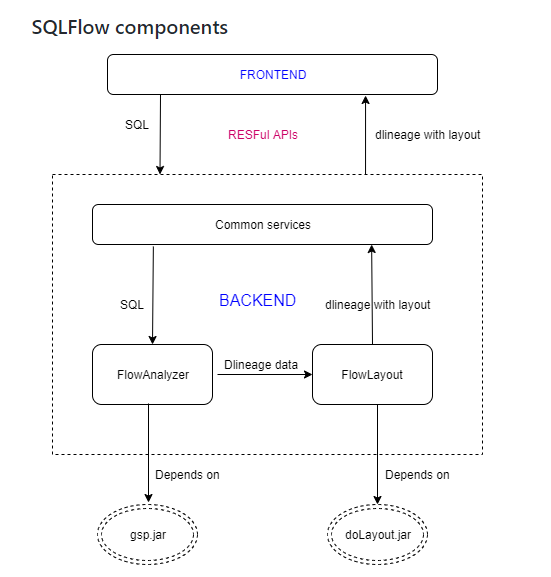Introduction to Gudu SQLFlow Data Flow Generation
Gudu SQLFlow Data Flow Generation
As one of the most popular data lineage tools, Gudu SQLFlow is a tool that automatically discovers data flow by analyzing SQL scripts. It shows the flow of data between tables/views and columns in a data warehouse by generating a concise diagram. Gudu SQLFlow supports more than 20 popular databases including bigquery, couchbase, dax, db2, greenplum, hana, hive, impala, informix, mdx, mysql, netezza, openedge, oracle, postgresql, redshift, snowflake, sqlserver, sybase, teradata , vertica and more. Users only need to copy and paste the SQL script and click an analysis button to get the data flow diagram immediately. The data flow can be highlighted in the diagram with just a click of the mouse. The operation is simple and the display results are clearly visible.

Introduction to Gudu SQLFlow Architecture
The structural view of Gudu SQLFlow is as follows, which consists of three basic components: client, front-end, and back-end analysis engine. Users can pass the SQL statement to be analyzed to the front end through the browser. The front-end performs syntax verification and analysis parameter settings, and then sends the configured logic to the back-end analysis engine. The analysis engine generates a data lineage model and then sends it to the front-end to generate graphics for display to users.
The specific structure is as follows:


Common elements that generate data flows
1、Select
It is the most basic and common result set generation, which may originate from inter-object associations or a single object, or from subqueries or CET.

The data for the target column “eName” comes from scott.emp.empName, so it generates a direct data flow like this:

RS-1 above is a select result set, which is a virtual table containing the columns returned by the query;
As shown in the figure:

2. Function
Functions are one of the most common elements in SQL statements, and they play a key role in Gudu SQLFlow analysis. It returns a concrete scalar result set with columns as arguments.

In the above SQL, a direct data flow is generated from the column salary to the round function:

As shown in the figure:

3. Expression
Expressions are similar to functions, and they also exist widely in specific generated statements;

In the above SQL, a/2 calculated from column a will be produced as a direct data flow.

As shown in the figure:

Conclusion
Thank you for reading our article and we hope it can help you to have a better understanding of the Gudu SQLFlow data flow generation. If you want to learn more about the use of Gudu SQLFlow and technical information, please log in to Gudu SQLFlow official website, and you will get more support and help.

